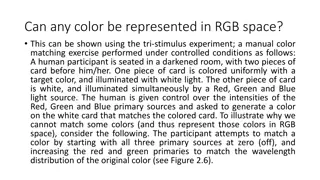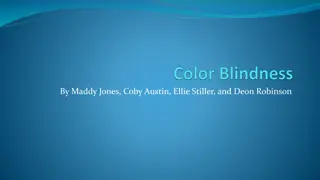Understanding Balance and Color in Design
Explore different types of balance in design, such as symmetrical, asymmetrical, and radial, and learn about color theory concepts like color schemes, color wheels, and contrast. Discover how colors interact, create focal points, and influence the overall composition in visual design.
Download Presentation

Please find below an Image/Link to download the presentation.
The content on the website is provided AS IS for your information and personal use only. It may not be sold, licensed, or shared on other websites without obtaining consent from the author. Download presentation by click this link. If you encounter any issues during the download, it is possible that the publisher has removed the file from their server.
E N D
Presentation Transcript
Name the 3 types of Balance Symmetrical Asymmetrical Radial
A type of balance in which both sides of a composition are balanced yet different. Asymmetrical
Formal balance is another word for which type of balance? Symmetrical
Which of the following is another word for "center of interest"? A. Focal Point B. Emphasis C. Dominance D. All of the Above D. All of the Above A. Focal Point B. Emphasis C. Dominance
A plan for selecting colors for a composition is also known as a ________ A. Color Spectrum B. Color Wheel C. Color Scheme D. Color Mix Color Scheme
The circular chart used to remember color relationships is a ________. A. Color Scheme B. Color Wheel C. Color Ray D. Color Circle Color Wheel
A. Neutral Colors B. Complementary Colors C. Primary Colors D. Tertiary Colors Secondary colors are obtained by mixing two ___________ colors. Primary Colors
Colors are said to be contrasting if they are _____________. A. Different in Lightness and Darkness B. Light in Value C. Dark in Value D. Bright & Intense Different in Lightness and Darkness
Contrast can be created by using ____________. A. Smooth and Rough Textures B. Large and Small Shapes C. Plain Areas against Areas of Patterns D. All of These All of These
Cool Colors are_______ Orange, green and purple Blue, green and purple Yellow, blue and red. orange, purple and green A. B. C. D. Blue, Green, Purple
Warm colors are____________. yellow, red, and orange. yellow, red and blue. yellow , green and blue orange, purple and green A. B. C. D. yellow, red, and orange.
Yellow-orange, red-orange, and yellow-green are examples of_______. Intermediate or Tertiary colors. Secondary colors Primary Colors Triadic Colors A. B. C. D. Intermediate / Tertiary
Another word for brightness of a color is __________. Value Intensity Hue Complementary A. B. C. D. Intensity
The art element that refers to the sense of touch is___________ Value Pattern Texture Shape A. B. C. D. Texture
Monochromatic refers to a painting done in one color. A. True B. False A. True B. False
You cannot see through an object or material that is transparent. A. True B. False A. True B. False
Negative space is the background or space around the subject of the artwork.. A. True B. False A. True B. False
Rhythm is created when visual elements are repeated. Rhythm may be alternating, regular, flowing, progressive, or jazzy. A. True B. False True
Variation is important in a work of art. Variation is the use of the same lines, shapes, textures, and colors. True False A. B. False
A related color scheme would be colors that are next to each other on the color wheel. True False A. B. True
Analogous colors is another term for complementary colors. True False A. B. False
Red and green are examples of complementary colors. True False A. B. True
The color plan of red, yellow and blue is an example of a triad color scheme. True False A. B. True
Unity is obtained by repeating colors and shapes all parts of a design are working together as a team. True False A. B. True
Tints of colors may be created by adding white. Pink is a tint of red. True False A. B. True
Intensity is an art element that means darkness or lightness of a surface. True False A. B. False
Visual __________ is achieved when all parts of a composition appear to have equal weight. It seems stable.. Balance Pattern Unity Focal Point A. B. C. D. Balance
In a work is obtained by repeating colors and shapes all parts of a design are working together as a team. Balance Unity Pattern Focal Point A. B. C. D. Pattern
_______refers to the lightness or darkness of a color. Value Intensity Texture Shape A. B. C. D. Value
The element that refers to the tactile qualities is ____________. Value Texture Intensity Shape A. B. C. D. Texture
Name the 3 types of Texture Photography Detailed Drama Information
What is the guideline which applies to the process of composing visual images into nine equal parts called? A.Rule of Thumb B.Rule of Thirds C.Ti c Tac Toe Grid D.The Golden Section Rule of Thirds























